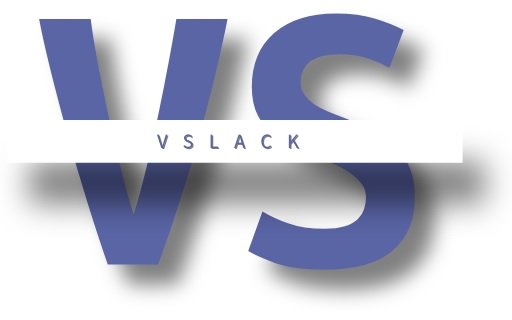Introduction
In the vast landscape of the internet, images play a significant role in conveying information, sparking curiosity, and sometimes even causing confusion. But what if you stumble upon an image and want to know more about it? Enter reverse image search, a powerful tool that allows users to discover more about an image by simply uploading it or providing its URL. In this article, we'll delve into the world of reverse image search, exploring its functionality, benefits, practical applications, as well as its challenges and limitations.
Benefits of Reverse Image Search
Reverse image search offers a multitude of benefits that can revolutionize the way we interact with images online. Firstly, it enables users to identify unknown objects or entities depicted in an image. Whether it's a mysterious plant in your backyard or an unfamiliar landmark in a travel photo, reverse image search can provide valuable insights and information.
Moreover, reverse image search can help in verifying the authenticity and source of images. With the proliferation of fake news and misinformation, being able to confirm the origin of an image can be crucial in discerning truth from falsehood. Additionally, it allows users to find similar images, making it a valuable tool for photographers, designers, and researchers alike.
Furthermore, reverse image search can be instrumental in detecting fake profiles or fraudulent activities online. By cross-referencing images across various platforms, users can uncover instances of identity theft or catfishing scams.
Methods of Conducting Reverse Image Search
There are several methods to perform a reverse image search, catering to different preferences and technological capabilities. The most common method is through search engines such as Google Images, which allow users to upload an image or paste its URL to initiate the search.
Alternatively, there are dedicated reverse image search tools and websites that offer more specialized features and search algorithms. These platforms are designed specifically for reverse image search and may yield more accurate and comprehensive results.
Browser extensions also provide a convenient way to conduct reverse image searches directly from your web browser. With a simple right-click on any image, users can initiate a search and explore related content effortlessly.
For mobile users, there are various apps available on both iOS and Android platforms that facilitate reverse image search on the go. These apps often offer additional features such as image editing and comparison tools, making them versatile tools for visual discovery.
Practical Applications
The applications of reverse image search are diverse and far-reaching. In academic and journalistic research, it can be invaluable for fact-checking and verifying the authenticity of images used in articles or studies. By corroborating information with reliable sources, researchers can ensure the accuracy and credibility of their work.
In everyday life, reverse image search can help individuals identify products, landmarks, or artworks featured in images. Whether it's a trendy fashion item spotted on social media or a breathtaking landscape captured in a travel photo, reverse image search can provide relevant information and context.
Moreover, reverse image search serves as a defense mechanism against online scams and frauds. By scrutinizing images associated with suspicious profiles or advertisements, users can avoid falling victim to phishing schemes or counterfeit products.
Additionally, reverse image search can be a valuable tool for managing one's online reputation. By monitoring where their images appear online, individuals can take proactive steps to address unauthorized usage or remove potentially damaging content.
Furthermore, reverse image search enables users to find higher resolution versions of images, which can be particularly useful for graphic designers, artists, and photographers seeking quality visuals for their projects.
Challenges and Limitations
Despite its numerous benefits, reverse image search is not without its challenges and limitations. One of the primary concerns is related to copyright and privacy issues. Uploading images to search engines or third-party platforms may raise copyright infringement concerns, especially if the images are protected by intellectual property rights.
Moreover, reverse image search may have limited effectiveness when dealing with altered or manipulated images. In cases where images have been heavily edited or distorted, search algorithms may struggle to find accurate matches or relevant information.
Conclusion
In conclusion, reverse image search is a powerful tool that unlocks a wealth of information hidden within images on the internet. From identifying unknown objects to verifying sources, finding similar images, and detecting fraudulent activities, its applications are diverse and far-reaching. By leveraging various methods and platforms, users can harness the potential of reverse image search for research, fact-checking, product identification, online security, reputation management, and more. Despite some challenges related to copyright and image alteration, reverse image search remains an indispensable tool in the digital age, empowering users to navigate the vast visual landscape of the internet with confidence and clarity.
FAQs
1. What is the best reverse image search tool? There are several reputable reverse image search tools available, including Google Images, TinEye, and Reverse Image Search by SmallSEOTools. The best tool depends on your specific needs and preferences. 2. Can reverse image search find images on social media? Yes, many reverse image search tools are capable of finding images on social media platforms. However, access to social media images may be subject to privacy settings and platform policies. 3. Is reverse image search always accurate? While reverse image search can provide valuable insights, its accuracy may vary depending on factors such as image quality, relevance of search terms, and algorithm effectiveness. Users should interpret results with caution and cross-reference information when necessary.
4. How can I protect my privacy when using reverse image search? To protect your privacy when using reverse image search, avoid uploading personal or sensitive images to public platforms. Use secure and reputable tools, and be mindful of the privacy settings of any images you upload.
5. Are there any legal implications of using reverse image search? The legality of using reverse image search depends on factors such as copyright laws and usage rights. Users should be aware of copyright infringement risks and ensure they have the appropriate permissions before using images for commercial purposes.








.jpeg)

0 Comments